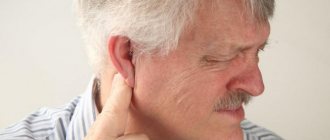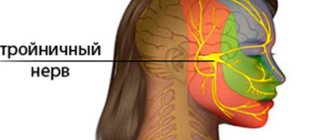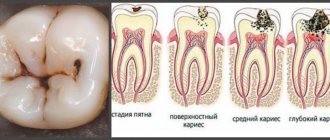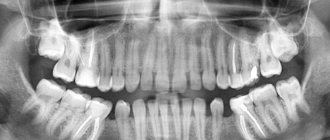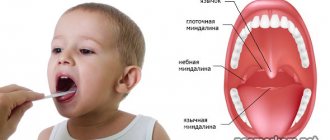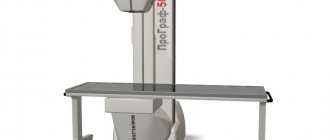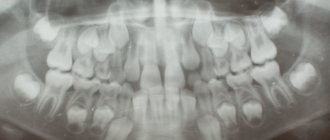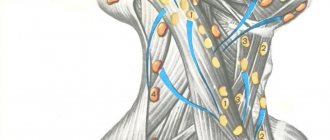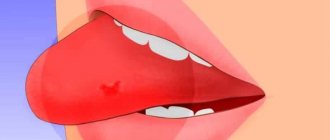Lymph nodes are the main elements of the lymphatic system, responsible for the production of immune cells (mainly lymphocytes).
They neutralize viral agents that have entered the body from the external environment.
Having detected potentially pathogenic microflora and toxic substances inside the lymph, the organ localizes them inside, resulting in an increase in its size.
If the lymph node in the neck is enlarged and can be felt, then this disease is called lymphadenitis. If the lymph nodes in the neck hurt, then ARVI may act as a provoking factor.
However, this is not the only factor provoking the pathological process.
Other factors include inflammatory processes of the dental organs, oncological tumors and other diseases. Only a specialist can make an accurate diagnosis of the disease.
Why do the lymph nodes in the neck hurt?
Lymph nodes are an important element of the immune system. They effectively counteract infection. They filter pathogenic microflora and promote their removal from the body.
The nodes are located in the cervical region, armpits and groin area. Contains leukocytes. Lymph nodes in the neck are called cervical.
Due to the rapid increase in the number of leukocytes, the lymph nodes in the neck and throat hurt when a virus is detected in an adjacent organ.
That is why, if there is a suspicion of an infectious lesion, specialists palpate the lymph nodes.
Inflammation of the lymph node
Inflammation of the lymph node can cause neck pain
The lymphatic system and nodes belong to the body's immune defense system. The nodes are a kind of filter for infection and a sensor that shows the presence of inflammation.
Lymph nodes enlarge and hurt when performing their function - retaining microbes, infections, foreign cells.
Inflammation of the lymph nodes occurs:
- Due to other diseases (most common).
- An independent disease (in the absence of diseases of other organs, lymphoma, metastases).
According to the nature of inflammation, lymphadenitis occurs:
- Serous. Symptoms will be enlarged, painful lymph node. Treatment will include searching for the underlying cause and conservative therapy.
- Purulent. It is characterized by an enlarged lymph node, severe pain, redness of the skin, increased temperature, and a disturbance in the general condition. Surgical and medical treatment is necessary.
Symptoms
Lymphadenitis is not an independent disease, but is considered a sign of a large number of viral diseases and other pathologies.
Any painful sensations inside them indicate the presence of any malfunctions within the body.
In addition to leukocytes, the lymph nodes contain a clear, yellow liquid - lymph. It washes the cells of organs and tissues.
With the flow of lymph, pathogenic microflora penetrates the lymph nodes, which delay the infection, preventing it from spreading throughout the body.
Then harmful microorganisms and transformed cancer cells are destroyed.
If the body is not able to fight viruses on its own, lymphocytes actively multiply in order to eliminate the infection. As a result, the lymph nodes in the neck become enlarged and painful.
Symptoms of the inflammatory process are as follows:
- General malaise.
- Fever.
- Discomfort in the head.
- Fever.
- Painful sensations during palpation.
- Sore throat.
When the above symptoms appear, and the skin turns red, intense pain occurs, therefore, suppuration begins.
In some cases, insignificant enlargement of the lymph node may indicate its enhanced functioning.
What should not be done if the lymph nodes are inflamed?
- Enlarged lymph nodes are not always a sign of lymphadenitis against the background of swelling and hardening under the jaw. The appearance of the same symptoms may indicate the development of a malignant tumor, so self-medication is unacceptable. It is better to first clarify the diagnosis, get tested, and undergo other diagnostic procedures suggested by the doctor.
- It is unacceptable to take antibiotics without a doctor's prescription.
Taking them to eliminate fever, fever or chills will not lead to positive results, and can only worsen your health. It is worth understanding that treatment of HIV infection or tumor is not carried out by taking antibacterial agents. What if there is swelling under the lower jaw due to the development of a neoplasm that has nothing to do with the inflammatory processes that occur with lymphadenitis. - Under no circumstances should you apply heat, such as a heating pad, to the inflamed lymph nodes.
Warming up areas of inflammation can only lead to increased swelling in the neck, the appearance of side symptoms and even a feverish state. It is heat that promotes the rapid spread of infection through the blood to nearby tissues. In the presence of tumor cells, this is extremely dangerous and undesirable. - It is unacceptable to apply not only heat, but also cold in order to quickly relieve swelling. This will not help if the enlargement of the lymph nodes is caused by a viral infection. Local hypothermia can only lead to an increase in symptoms and a deterioration in the general condition of the patient.
Causes
The main reasons for the formation of cervical lymphadenitis:
- Viral diseases of the upper respiratory tract or oral cavity (sore throat, ARVI, stomatitis, diphtheria) often provoke inflammation.
- The lymph nodes in the neck also hurt during mechanical trauma or a tumor, if there is oncological degeneration of lymphatic tissue cells.
- A general deterioration in the functioning of the immune system often leads to an enlargement of the node. In certain situations, this condition has a chronic course. For example, a frequently ill child has enlarged lymph nodes under the jaw. This can be caused by anemia, hypothermia, lack of vitamins, excessive nervous tension or prolonged stress. In some cases, systemic enlargement of lymph nodes may indicate the presence of an immunodeficiency characteristic of AIDS in the patient.
- In some situations, diseases of the endocrine system, connective tissue, impaired metabolism, allergies, and excessive consumption of alcoholic beverages will become a provoking factor in why the lymph nodes in the neck hurt.
When cervical lymphadenitis is observed, it is imperative to consult a specialist.
You should not carry out self-treatment, in particular during severe pain or at an advanced stage of the disease.
Traditional medicine recommendations
It has already been mentioned that traditional medicine can only be used as an auxiliary technique. There are recipes that will help cleanse the lymph.
You should not apply warm compresses if the lymph node under the jaw is inflamed without consulting a doctor. This can lead to negative consequences. Heat is not always effective in eliminating this problem, especially if the disease is oncological in nature.
All home remedies should not replace drug therapy. This is dangerous for your health.
- Echinacea tincture relieves pain and inflammation; dissolve 10-15 drops in a glass of warm water, after which you can rinse your mouth or take it orally.
Echinacea tincture - Do not forget about the benefits of vitamin C, which is effective against any colds and infectious diseases. This component is abundant not only in lemon and other citrus fruits. Rosehip decoction is no less rich in vitamins. You can drink this tea without restrictions during illness. But it is worth remembering that it consolidates. Vitamin C promotes the production of leukocytes, which are necessary for the normal functioning of the lymphatic system.
- Licorice root tincture will help cleanse the lymph.
Take on an empty stomach. To do this, you need to dilute one spoon of the product in a glass of warm water and drink. The product does not have an unpleasant taste, so it is easily taken without causing emetic or other side effects. Licorice root tincture - Fresh juice squeezed from citrus fruits is ideal for cleansing the lymph. For one dose, you need to squeeze the juice from lemon, orange and grapefruit. Take one fruit at a time or in equal quantities to make a glass of fresh juice. Drink on an empty stomach. You can dilute the product with boiled water and drink it every hour throughout the day. But for the daily norm you will need to take three fruits. A three-day course is enough to cleanse the lymph.
We invite you to familiarize yourself with the Stamped crown: alloys, stages of manufacturing and installation, photos of products
Herbs - chamomile, calendula, St. John's wort and sage
If we talk about herbs in the treatment of the lymphatic system, then water infusions and decoctions of the following herbs are ideal:
- coltsfoot;
- calendula;
- St. John's wort;
- horsetail;
- yarrow;
- mint;
- chamomile;
- plantain;
- lemon balm;
- valerian.
The pharmacy sells preparations that are used to treat colds and infectious diseases. Most of these mixtures contain the listed herbs, so they are suitable in cases where the lymphatic system needs to be treated.
Mint decoction
Even slight pain under the jaw or slight enlargement of the lymph nodes is a signal to immediately consult a doctor. If the disease gets worse, you may even need surgery. Only careful attention to your body will help you avoid radical measures.
Lymph node on the right side of the neck hurts
When the lymph node on the right side of the neck becomes inflamed and hurts, this indicates that the throat is inflamed, or that the right side of the thyroid gland or the right tonsil is enlarged.
In rare cases, infectious lesions may occur that spread from the oral cavity and soft tissues of the face.
Before deciding what to do, it is necessary to take into account what is prohibited if the lymph nodes in the neck hurt, warm them, put compresses on the affected area and carry out independent treatment.
A complication of such actions is an abscess of the lymph node. Even when pain and enlargement of the lymph node are not significant, in any situation a visit to a specialist will be necessary.
The infection can spread rapidly and the condition of the affected lymph node without appropriate therapy will significantly worsen and the most pessimistic prognosis will be the inflammatory process of all nodes inside the body.
Lymph node on the left side of the neck hurts
The causes of pain in the lymph nodes on the left neck are actually the same as the provoking factors of discomfort on the right neck.
However, here it is necessary to add that during pain on the left side, the organs of the peritoneum and retroperitoneal space are sometimes affected.
When the inflammatory process has spread to the left lymph node under the jaw and throat, viral mononucleosis, cytomegalovirus, and toxoplasmosis can cause this.
In particular, such diseases are typical for children.
In any situation, in order to establish the cause of the disease, it is necessary to do general and biochemical tests of blood and urine; in rare cases, the doctor prescribes an ultrasound of certain organs of the peritoneum or a puncture.
Rubella
Acute infectious disease , in which intoxication is moderate, but there is a rash on the skin. The causative agent is a virus, the source of infection is a sick person. A constant sign is the involvement of the lymph nodes of the neck in the pathological process, which become painful when palpated.
Damage to the lymph nodes in the neck is bilateral, develops before the appearance of the rash, and disappears after the skin rash fades.
Additional symptoms:
- General weakness, malaise, pain in joints, muscles, head.
- Temperature 37.3-37.4°C.
- Conjunctivitis.
- Pale pink spots on the soft palate.
- Rhinitis.
- Dry cough.
- A constant sign is a rash on the face, behind the ears, and scalp. The rash quickly spreads to the body and limbs.
If you suspect rubella, you should contact an infectious disease specialist or pediatrician.
With rubella, complications are rare, but they are serious:
- arthritis;
- pneumonia;
- polyneuropathy;
- neuritis;
- sinusitis;
- otitis;
- meningoencephalitis;
- nephritis;
- thrombocytopenic purpura;
- damage to the pancreas with the development of type 1 diabetes mellitus.
Article on the topic: The most complete and detailed instructions for the use of Azathioprine
Diagnostics
The diagnosis is made on the basis of the clinical picture, epidemiology. anamnesis and laboratory data:
- complete blood count – leukocytes and platelets are reduced, the number of plasma cells is increased, ESR does not respond;
- serological analysis is aimed at identifying immunoglobulins of class M, IgG;
- molecular biological method - PCR;
- According to indications, ECG, neurosonography, ultrasound of the abdominal organs, radiography of the paranasal sinuses and lungs are performed.
Treatment
The following drugs and methods are used for treatment:
- interferon alpha;
- clavulonic acid;
- non-steroidal anti-inflammatory drugs for arthritis;
- if there is difficulty in nasal breathing - xylomethine;
- for detoxification, intravenous saline solutions;
- for cough - acetylcysteine;
- for dyspepsia - smecta;
- severe course requires the use of prednisolone;
- for bleeding - etamzilat, vikasol;
- physical methods of cooling when drugs for the treatment of hyperthermia are ineffective.
Lymph node in the back of the neck hurts
Often, pain and an enlarged lymph node in the back of the neck are observed in a child, since one of the main provoking factors for this condition is considered to be viral mononucleosis, to which children are susceptible.
To diagnose the disease, appropriate diagnostics are carried out. Cytomegalovirus, tuberculosis, tularemia, brucellosis can also cause enlarged lymph nodes.
Special mention should be made about oncological diseases (lymphogranulomatosis and lymphocytic leukemia). In this situation, the lymph node will be hard, enlarged and immobile.
Self-examination of lymph nodes
If there is a suspicion of inflammatory processes in the lymph nodes, it is necessary to examine and palpate the cervical spine:
- Assess skin integrity.
- In order to exclude myositis, the tissue in the affected area is felt with 2 fingers.
- Evaluate the formations according to the following criteria: pain when pressed, mobility of the node, temperature and shade.
- When several nodes are palpated and are slightly enlarged, we are talking about pathological processes in the immune system.
- Uneven outlines, poor mobility and lack of pain indicate oncology.
- When your throat hurts and the lymph nodes in your neck are inflamed, the pain intensifies as you press and move the ball.
- It is necessary to examine the gums and oral mucosa.
- There should also be no signs of damage in the teeth.
Differential diagnosis
Attention, to make a correct diagnosis and treatment, consultation with a doctor is necessary. Only a doctor can conduct differential diagnosis, clinical and additional examinations, establish connections between diseases and prescribe treatment. Pain and inflammation in the lymph node is a secondary and easier to diagnose disease.
To determine gum disease, it is necessary to carry out a differential diagnosis of possible diseases:
| Name of the disease | Definition | Accompanied by enlarged lymph nodes | Symptoms | Treatment |
| Gingivitis | Gum inflammation | In acute form, with herpetic and aphthous lesions | Pain, swelling, redness, swelling, increased gum size | Local, etiotropic, anti-inflammatory |
| Periodontitis | Inflammation of the tooth ligament | In good shape | Pain, swelling, redness, swelling, exudate from the gums | Professional oral hygiene, anti-inflammatory therapy of gum tissue |
| Periodontal disease | Dystrophic damage to the tissues around the tooth | Rarely | Pain, discomfort, itching in the gums | General and local effects on gum tissue. |
| Periodontitis | Inflammation of the tissue behind the apex of the periodontal tooth | Rarely, in acute inflammation | Pain when biting on a tooth, pain and redness of the gums | Removal of the tooth nerve and medicinal treatment of the inflammation site. |
| Periostitis | Inflammation of the periosteum and gums | Yes | Sharp pain in the alveolar process, gums, swelling, facial asymmetry, increased temperature | Removal or treatment of a tooth, incision of the gum and periosteum. Local and general drug treatment. |
| Pericoronitis | Inflammation of the gums above or near the wisdom tooth | In purulent form | Pain in the gums and jaw in the area of the last teeth, swelling and redness of the gums | Tooth extraction or excision of the gum above the tooth, drug therapy. |
| Stomatitis | Inflammation of the mucous membrane of various etiologies | In acute form, with herpetic and aphthous lesions | The presence of lesions on the mucous membrane, gums, and tongue. Painful sensations. | Professional oral hygiene, local and general treatment with medications. |
We suggest you read: Is it good to rinse your mouth with baking soda?
Pain in the gums and pain in the lymph node bring discomfort
Treatment
To answer the question why the lymph nodes in the neck hurt, you need to consult a doctor.
In many situations, inflammatory processes are considered secondary symptoms and therefore do not require separate therapy.
It is necessary to treat the underlying disease and the enlarged nodes will become smaller in size. An exception will be purulent inflammatory processes in the nodes. In such a situation as treatment, surgical intervention is necessary.
What to do when the disease is viral in origin? In such a situation, antibiotics are used. Depends on the type of virus and is prescribed by a specialist.
When the lymph node is enlarged and has an infectious origin, symptomatic treatment is prescribed.
When an allergy is considered a provoking factor for lymphadenitis, antihistamines are prescribed, and measures are taken to eliminate the effect of the irritant on the body.
A child often experiences an inflammatory process in the lymph nodes as a defensive reaction to the penetration of a viral agent into the body.
In certain situations, during the primary form of lymphadenitis, physiotherapeutic methods may be prescribed. Self-treatment is prohibited.
The main danger is that, due to the fact that lymphadenitis is considered a secondary ailment, by concentrating on painful discomfort and enlarged lymph nodes, it is possible to start treatment of the main ailment.
When a patient, in addition to having enlarged lymph nodes, has an elevated temperature, bed rest and lack of physical activity are recommended.
A plentiful drinking regimen is also recommended - adults up to 2 liters per day, children up to 1 liter.
Folk remedies can be used to remove the hidden causes of the disease - inflammatory processes of the upper respiratory tract and oral cavity.
During inflammation, rinsing the mouth with extracts of sage, peppermint and chamomile is effective.
When the cause of persistent lymphadenitis is deterioration of the patient’s immune system, then decoctions of lemongrass and echinacea with a general strengthening effect help in such a situation.
But it is necessary to exclude the risk of malignancy, since in such a situation this remedy can worsen the situation.
Treatment of enlarged lymph nodes under the jaw
Depending on the stage of the disease, various treatment methods may be prescribed:
- Therapeutic method - special antibiotics or antiviral drugs are prescribed. To relieve symptoms, a specialist may prescribe painkillers, fever reducers, and antihistamines. The treatment period is 7-12 days. In addition to medications, doctors prescribe a course of vitamins that improve immunity.
- Surgical intervention. If the patient’s condition is serious, when a large amount of pus has accumulated in the lymph nodes, the specialist performs an operation to excise the inflamed node. After opening, the accumulated pus is removed and washed with antiseptic drugs. After washing, a drainage rubber is installed, which does not allow purulent fluid to accumulate and removes it out. A sterile dressing is applied.
- Traditional therapy. An excellent option for treating lymphadenopathy during a cold is taking Echinacea tincture. This herb has anti-inflammatory and antimicrobial effects. An infusion of hazel leaves perfectly relieves inflammation when taken orally. In addition to tinctures, a good option is to use compresses made from a mixture of celandine juice and alcohol.
Adverse consequences
Purulent lymphadenitis that is not completely eliminated can provoke a number of adverse consequences:
- phlegmon (purulent inflammatory process of subcutaneous tissue);
- periadenitis;
- thrombophlebitis;
- fistulas inside the esophagus and trachea.
In the presence of phlegmon, a painful swelling forms in the area of the lymph nodes.
In addition, this disease will be characterized by pain during swallowing and opening the mouth, and an increase in temperature.
The lymph node in the neck can hurt due to various provoking factors. There is no causeless discomfort, in particular when these unpleasant sensations are concentrated in the lymph nodes.
Therefore, careful monitoring of the state of one’s own body and health makes it possible to prevent radical treatment and significantly reduce the likelihood of adverse consequences in the future.
Lymph nodes in the cervical region can increase in size and hurt only in the presence of dangerous inflammation.
To avoid radical surgical intervention, if pain develops, you should immediately consult a doctor and begin appropriate treatment.
How to treat?
Your actions will depend on:
- If it is traumatic in nature
, gradually intensifies, and the mouth does not open, you need to consult a doctor for help. Because most likely there is a dislocation, or even a fracture of the bones. If there is a small bruise and there is no swelling or bruising, and the pain does not intensify, then you can simply apply ice to the site of the bruise. - Inflammation or purulent formation
- possibly due to polio. If the temperature reaches 40 and there is swelling on the left side, call an ambulance. These symptoms are also characteristic of peritonsillar abscess. This is a consequence of severe sore throat. Call a doctor immediately, otherwise the process will worsen. - If the pain is boring and very sharp
, it looks like trigeminal neuralgia. You should be examined by a neurologist. - If the pain in the jaw is constant
, it may indicate a tumor formation. Moreover, as the tumor grows, the pain will only intensify. - Sometimes braces cause severe pain.
If your jaw hurts at first, this is normal. But if you are in a lot of pain, or it lasts too long, contact. - Arteritis of the facial artery
- causes severe painful sensations, you should consult a doctor. This is treated with anti-inflammatory drugs. - Jaw pain manifests itself in otitis media
- it is caused by pathogenic microflora, it occurs suddenly: sharp, shooting, the behind-the-ear lymph nodes enlarge, hearing decreases. An otolaryngologist prescribes appropriate treatment. - An attack of angina pectoris
is localized first behind the sternum, then becomes obvious.
Methods
Treatment options will depend on the underlying cause of the pain. To eliminate it, it is first necessary to examine the patient. X-ray examinations, urine and blood tests are carried out.
If necessary, a CT or MRI will be performed. A neurologist will also be needed.
Methods:
- If the injury is severe
, a cold compress and painkillers are prescribed. - When
- surgical intervention is indicated. - If the jaw is dislocated
, a traumatologist or dentist will straighten it and make a fixing bandage. - Purulent diseases
are treated in a hospital, surgical interventions and massive antibiotic therapy are used. - Treatment of carotidynia
includes any painkillers and antidepressants. - Abscesses
are opened surgically and the purulent contents are removed, antibiotics and painkillers are prescribed. - If the pain is caused by myocardial infarction, then treatment is carried out in a hospital:
thrombolytics: alteplase, streptokinase; anticoagulants; antiplatelet agents; beta-blockers; normalize blood pressure; relieve pain with narcotic analgesics. - Pain of odontogenic origin
- requires, it is necessary to treat the existing one: pulpitis, stomatitis, etc. - If the original cause is a wisdom tooth
, the surgeon will make a small incision to allow it to grow normally, or remove it. - For sarcoma
, surgical treatment in combination with chemotherapy will be required. - Various tumors
are treated only surgically.
Only a specialist can, after conducting an examination, prescribe the necessary tests and medications to eliminate pain and effectively treat.
The sooner it starts, the faster you can get rid of the causes of the disease. The risk of developing unwanted complications in the future will be reduced. Enjoy and take care of your health, it is priceless!
Jaw pain is pain in one or both bones of the skull on which the teeth are located. In addition, this type of pain includes pain in the temporomandibular joint. Jaw pain may develop gradually or occur suddenly. Depending on the cause, it can vary from barely noticeable to very severe. If a person has a sore jaw, this is due to disease of the teeth, soft tissues, glands of the oral cavity or throat, as well as due to local trauma or infection.
The jaws provide the basis for teeth and also perform the functions of chewing food and speaking. The upper jaw is fixed, while the lower jaw is independent, movable and attached to the skull by the temporomandibular joint. The structure of the jaw largely determines the appearance of a person’s face. The lower jaw consists of a body and two branches-processes, which form two fused halves. The chin is part of the lower jaw and has a hole in the center through which nerves and blood vessels pass. Another part of the chin is the alveoli, which form the gums and serve to attach and position the teeth. Each tooth has its own alveolus.
The chin bone is located in the lower part of the skull on the inside and serves to attach the tongue. The chin bone can be double or single. Below this bone there is a recess for the attachment of the digastric muscle. On the side of the chin there are recesses for the location of the sublingual glands. The sides of the chin end at the cheekbones, to which the muscles of mastication are attached. In the middle of the branches of the chin there are openings for blood vessels and nerves. On top of the branches on each side of the lower jaw there are rough processes for attaching the temporal muscles, and the upper one consists of a body and four processes:
- frontal,
- zygomatic,
- palatine,
- alveolar.
In the upper jaw there is a maxillary sinus with a mucous membrane for the passage of air, in addition, its anterior part has a cavity with an opening for the passage of the optic nerve. It connects to the skull and forms a single whole. The processes on the right and left are connected to each other and form the hard palate in front. The upper teeth are located in special cells - alveoli. In addition, there are four surfaces:
- the orbital surface creates the lower base of the orbit;
- the anterior surface, from which the outer surface and alveolar process begin;
- the nasal and superior surfaces are connected and merge into each other.
There is an opening in the nasal surface for communication between the maxillary sinus and the nasal cavity. The outer lateral surface has a tubercle at the back below, and several small holes are channels for the passage of blood vessels and nerves to the teeth. The inside of the upper jaw has a cavity for air to pass through. This cavity is the largest sinus of the nose. The zygomatic bone and the zygomatic process are connected. The frontal process, nasal and frontal bones are also connected.
